Rank Species | Genus Araneus Higher classification Angulate orbweavers | |
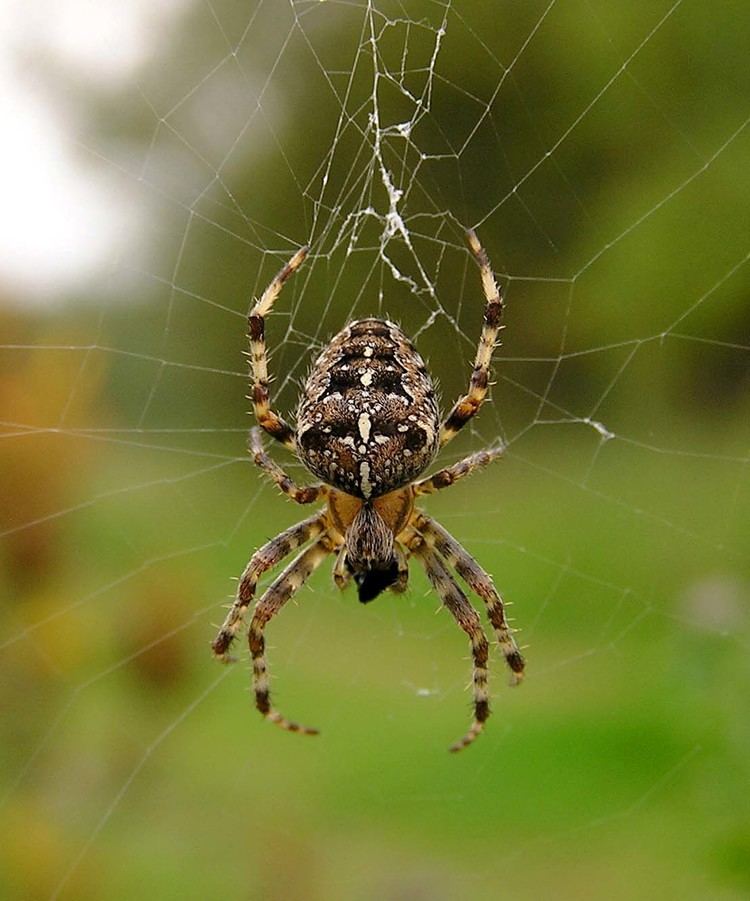 | ||
Similar Angulate orbweavers, Orb‑weaver spider, Argiope, Arachnid, Argiope bruennichi | ||
Garten kreuzspinne araneus diadematus in action
The spider species Araneus diadematus is commonly called the European garden spider, diadem spider, cross spider, or crowned orb weaver. It is an orb-weaver spider found in Europe and North America.
Contents
- Garten kreuzspinne araneus diadematus in action
- Handling araneus diadematus huge female
- Range
- Size and markings
- Specialization
- References
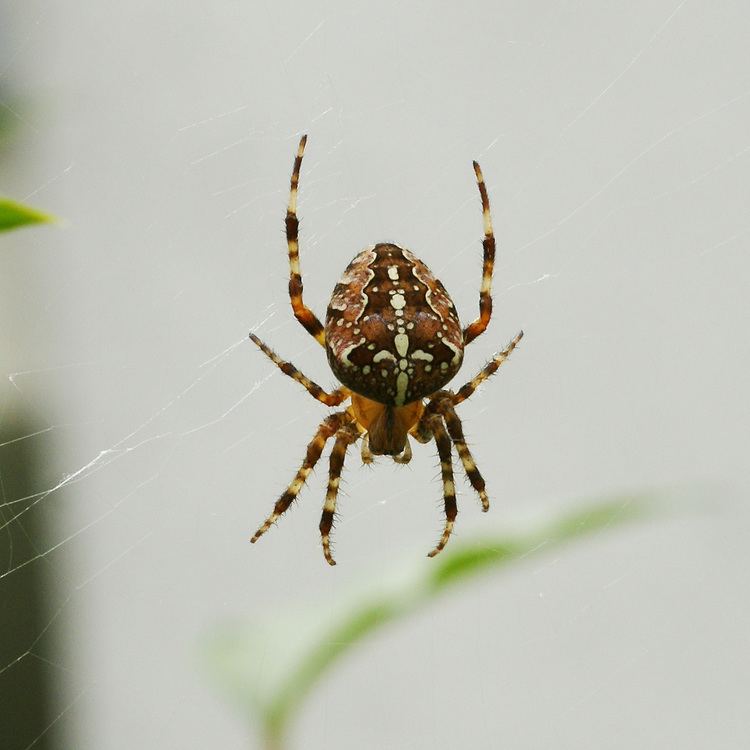
Handling araneus diadematus huge female
Range
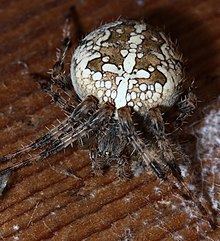
A. diadematus is found throughout Europe and across North America, from southern Canada to Mexico, and from British Columbia to Newfoundland.
Size and markings
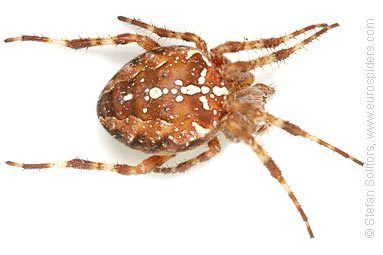
Individual spiders' colourings can range from extremely light yellow to very dark grey, but all A. diadematus have mottled white markings across the dorsal abdomen, with four or more segments forming a cross. The markings are formed in cells filled with guanine, which is a byproduct of protein metabolism.
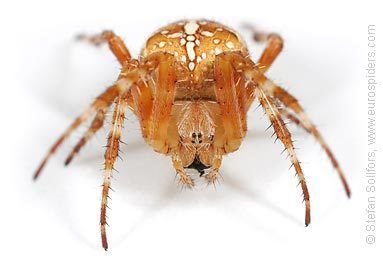
Adult females range in length from 6.5 to 20 mm (0.26 to 0.79 in), while males range from 5.5 to 13 mm (0.22 to 0.51 in). Occasionally, the female will eat the male directly after mating. (See video below.)
Specialization
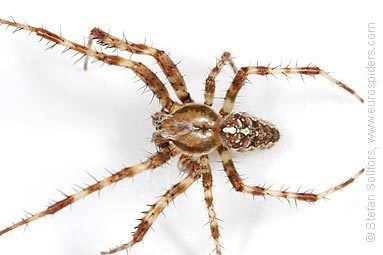
The legs of orb-weaver spiders are specialized for spinning orb webs. The webs are built by the larger females who hang head down in the center of the web or remain hidden in nearby foliage, with one claw hooked to a signal line connected to the main orb waiting for a disturbance to signal the arrival of prey. Prey is then quickly bitten and wrapped in silk before being stored for later consumption. The initial bite serves to paralyze the prey and minimize the danger of the spider herself being stung or bitten, and the enzymes thus injected serve to begin liquefaction of the prey's internal structures.
A. diadematus is a reclusive creature and only bites humans if cornered or otherwise provoked. The bite is not unlike a mild bee sting.
Some orb-web spiders (e.g., Neoscona arabesca) routinely recycle the metabolically costly silk by disassembling and eating their webs in the morning or evening, depending on the species' diurnal or nocturnal nature, or in anticipation of a thunderstorm. This complex process can take just a few minutes.
